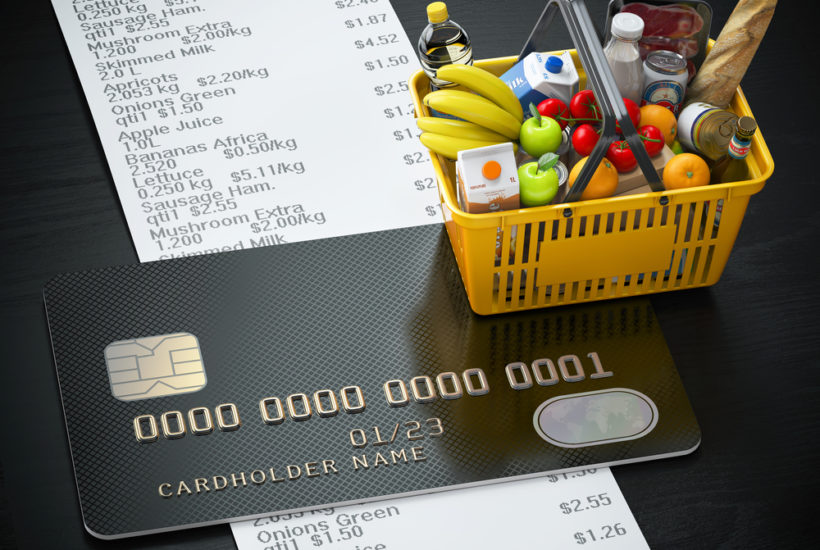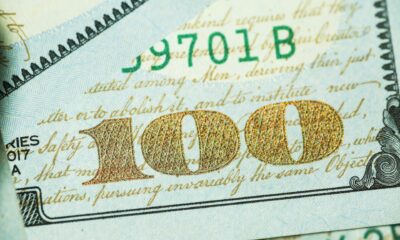Featured
The status of today’s economic inflation
The cost of living is getting higher and yet, the government would say there is not much inflation.

I recently had dinner with my extended family. Afterward, my parents mentioned they were surprised at how expensive the meal had been. It was a nice restaurant, but nothing fancy. It worked out to roughly $50 apiece, before tip. As we left, we separately climbed into our newish cars, which cost more than $40,000. My brother-in-law’s pickup tops out over $50,000.
But don’t worry, the government tells us, there’s not much inflation.
We could have chosen a cheaper restaurant, and less expensive cars, which is exactly the point the government tries to make…
The government wants us accustomed to the chained consumer price index (CPI), where prices move higher and we’re chained to a falling standard of living.
The CPI measures the price of a consistent basket of goods. Any change is inflation. Chained CPI takes into account that when something gets more expensive, we could use less of it. To the government, this means we no longer suffer inflation because we quit buying the expensive item, or at least we had the opportunity to switch.
Never mind that it was the high price – or inflation – that drove us to make the change!
The “Logic”
Using this logic, there can’t be any inflation until we move to abject poverty, buying only the most basic essentials available on the market.
As prices move higher, we’ll switch from steak to hamburger, then to pork, chicken, and finally beans. The government won’t count inflation until bean prices trend higher and we’ve nowhere left to go.
The Trump administration wants to use chained CPI when increasing the poverty rate, which would make the measure increase slower, thereby cutting the number of people who qualify for benefits such as supplemental nutritional assistance (SNAP) and Medicaid.
The Obama administration tried to do the same thing with Social Security cost of living adjustments but was roundly condemned for it and backed off.
You might not think this matters to you, since you probably don’t receive government assistance; but don’t worry, they’ve already painted a target on your back.
Part of the 2017 tax reform was to index tax brackets to chained CPI instead of traditional CPI. This makes tax brackets increase slower than they would have, leaving more of your income subject to higher tax rates.
The game doesn’t stop there…
The government also adjusts the price of products to account for changes in quality or functionality. On its website, the Bureau of Labor Statistics (BLS) gives an example.
Suppose an old cathode ray television (CRT) cost $250 but isn’t available anymore. A new LCD television costs $1,250. You might think inflation should be 400 percent, but the government estimates the value of every aspect of the television from the bigger, better screen to the remote control, and how much “more” you get from the new unit.
Magically, they determine in their example that the price of the television actually fell seven percent.
What would make this laughable if it weren’t so perverse is that the old television isn’t available anymore. Consumers don’t have a choice about which television to buy, and are stuck paying $1,000 more, even if they don’t want the new features.
The BLS notes that it makes adjustments both ways, sometimes increasing the price of goods or services for the purpose of determining inflation. I’ve never seen it, but I think they should.

Think about cell phones
The government dramatically lowers the price of your phone because it has cool features that most of us will never use. But now we’re subject to 167 million robocalls per day, roughly 50 percent of all cell phone traffic. These calls impede our workflow by distracting us from our tasks. That should definitely count as higher inflation!
At the very least, we should keep track of all the adjustments the government makes to prices, comprising something of a standard of living index. The end result would be a percentage of the median family spending budget that the government makes disappear through mathematical calculations.
We can call the government-determined spending “fantasy,” and the unadjusted spending “reality.”
The difference between the two also has a name: “financial pain.”
It’s the pain when contracts allow for increased payments at the rate of inflation but don’t rise fast enough to cover actual spending. It’s the pain we feel in our paychecks that are supposedly rising faster than inflation, but won’t cover the cost of medical bills or tuition.
The solution is to increase our personal wealth through investments faster than the government rate or even personal rate of inflation. But that option isn’t available to everyone, which is why the government will need to find even more ways to take your money in the form of taxes in the years to come.
Instead of worrying about Greeks bearing gifts, beware of government bureaucrats doing math. It never comes out in your favor.
(Featured image by DepositPhotos)
—
DISCLAIMER: This article expresses my own ideas and opinions. Any information I have shared are from sources that I believe to be reliable and accurate. I did not receive any financial compensation for writing this post, nor do I own any shares in any company I’ve mentioned. I encourage any reader to do their own diligent research first before making any investment decisions.

-

 Cannabis1 week ago
Cannabis1 week agoMedical Cannabis vs Street Weed: Why Therapy Makes More Sense in 2025
-

 Markets2 days ago
Markets2 days agoGold, Liquidity, and Market Complacency Heading Into 2026
-

 Impact Investing1 week ago
Impact Investing1 week agoCOP30: Fragmented Climate Politics, Multi-Speed Transition, and Emerging Investment Opportunities
-

 Biotech2 days ago
Biotech2 days agoSalmoss Biotech: Turning Salmon Waste Into Breakthroughs in Regenerative Medicine

























